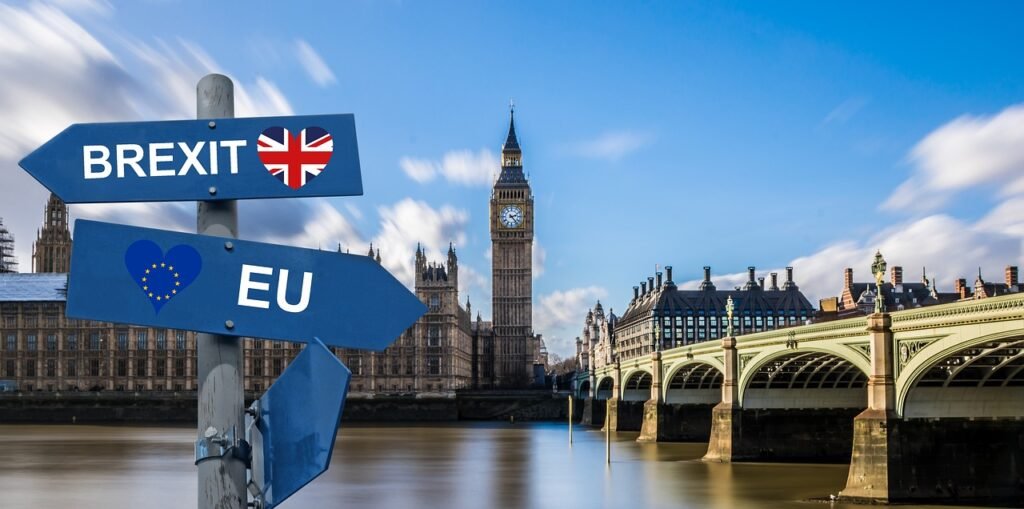Turning your artistic passion into a profitable business isn’t just about crafting beautiful pieces—it’s about strategically building a structure that allows your creativity to flourish in the marketplace. For many creatives, the transition from art as a hobby to art as a business can feel like moving from sketching in a notebook to painting a mural on a massive wall. It’s bigger, riskier, but potentially more rewarding.
The Leap from Hobby to Business: Navigating New Terrain
Imagine this: you’re a talented painter used to creating custom pieces from the tranquility of your home studio. Your artwork is primarily for pleasure, perhaps occasionally sold at local art fairs or through social media. Now, envision transforming this occasional sale into a steady, profitable business. This leap is about moving from an occasionally trodden path to paving a highway that connects directly to the heart of the art market.
The transformation involves not just scaling up production or marketing, but a fundamental change in mindset: viewing each piece of art not just as an expression of your soul, but as a product that must meet market needs and attract a specific audience. It’s about seeing beyond the canvas, understanding your potential customers, and positioning your art to sell without compromising your creative integrity.
Understanding Your Market: Before you can effectively turn your art into a business, you need to understand who is likely to buy your art and why. Are your potential customers looking for vibrant wall art to brighten up their homes, or are they collectors searching for unique pieces with potential investment value? Perhaps they’re businesses wanting to enhance their workspaces. Each audience requires different marketing strategies and sales channels.
Productization of Art: In making art your business, consider how you can productize your offerings. This might mean creating multiple editions of a popular piece, offering commissioned work, or diversifying into related products like prints, greeting cards, or digitally downloadable art. Productization allows you to cater to various customer segments and price points, increasing your artwork’s marketability and reach.
Pricing Strategies: Pricing art can be particularly challenging; it’s subjective and varies widely. Factors like your reputation, the medium, size, time spent, and the market’s general pricing standards all play into how you should set your prices. It’s crucial to strike a balance between fair compensation for your effort and what the market can bear.
Legal Considerations: Transitioning to a business also means considering the legal aspects. This includes deciding on a business structure that suits your needs—whether a sole proprietorship, a partnership, or a corporation. Each has different implications for liability, taxes, and ongoing compliance requirements. Also, consider the intellectual property rights associated with your art, ensuring you protect your creations effectively.
Building an Online Presence: In today’s digital age, having an online presence is essential. A well-designed website, an active social media presence, and possibly an online store, are crucial for showcasing your art to a broader audience. These platforms not only serve as your virtual gallery but also as primary sales channels in the increasingly digital marketplace.
Marketing Your Art Effectively
Marketing is the bridge that connects your creative work with the audience who will appreciate and pay for it. In the world of art, effective marketing is not just about selling a product; it’s about telling a story, conveying emotions, and creating a connection with your audience.

Crafting a Compelling Online Narrative
In the realm of art, the story behind each piece can be as compelling as the artwork itself. Develop a narrative around your creations that invites potential customers into your world. Share the inspirations, the struggles, and the triumphs of your artistic journey through your website content, blog posts, and social media updates. This storytelling approach not only enhances the perceived value of your work but also builds a personal connection with your audience, making your art more memorable and desirable.
Utilizing SEO to Reach New Audiences
Search Engine Optimization (SEO) is not just for commercial businesses but is crucial for artists looking to sell their work online. Optimize your website and online content with keywords that potential buyers might use to find the types of artwork you create.
For example, if you specialize in watercolor landscapes, keywords might include “watercolor landscape art,” “affordable watercolor paintings,” or “custom watercolor landscapes.” Implementing SEO tactics will help your website rank higher in search engine results, making it easier for new fans and customers to find you.
Engaging with Visual Social Platforms
Platforms like Instagram, Pinterest, and even TikTok offer vast opportunities for artists. These platforms are inherently visual and provide a perfect canvas to showcase your work. Regularly post high-quality images of your artworks, create process videos, and share live painting sessions to engage your followers. Use hashtags strategically to reach broader audiences who might be interested in your style of art. Engaging directly with comments and messages can also foster a loyal community and encourage repeat business.
Email Marketing: Beyond the Regular Newsletter
While regular newsletters are important, personalizing your email marketing strategy can significantly increase engagement rates. Segment your email list based on interest areas and past purchasing behavior. Send tailored recommendations of new artworks, early-bird offers for your next exhibition, or exclusive previews of upcoming collections. Personalized emails make recipients feel valued and increase the likelihood of conversions.
Leveraging Local Art Scenes and Exhibitions
While digital strategies are crucial, never underestimate the power of local engagement. Participate in local art fairs, exhibitions, and community events to get your art in front of local buyers. Collaborate with local businesses, cafes, and galleries to display your work. These venues not only provide physical spaces to showcase your art but also help in building your reputation in the local art scene. Networking with other local artists and potential buyers can provide new opportunities and insights for expanding your business.
Collaborative Marketing
Partner with fellow artists or businesses to cross-promote your artworks. For instance, if you’re a visual artist, team up with a local musician for a show where your art complements their music, creating a holistic aesthetic experience. Collaborative marketing can introduce your work to diverse audiences and add depth to your art’s presentation, enhancing its appeal.
Productization of Art
It is essential to transform your creative output into tangible products that can consistently generate revenue. This process involves more than merely selling originals; it’s about diversifying the ways your art can be consumed and appreciated by a broader audience. Let’s explore how you can extend the life and profitability of your art through thoughtful productization strategies.
Creating Limited Editions and Prints
One effective way to productize your art is by offering limited edition prints. This approach allows you to make your work more accessible to a wider audience who may not be able to afford original pieces but still wish to own a piece of your creativity. Limited editions can create a sense of urgency and exclusivity, which can drive up demand and interest. Ensure each print is numbered and signed to maintain authenticity, which adds value for collectors and art enthusiasts alike.
Developing Art-Related Merchandise
Beyond traditional prints, consider transforming your artwork into a range of merchandise. This can include high-quality posters, greeting cards, calendars, or even more unique items like clothing or homeware, such as cushions or tableware featuring your designs.
Each product type can attract different customer segments and open up additional revenue streams. For instance, a beautifully designed set of note cards featuring your paintings can appeal to those looking for unique stationary, while a series of wearable items like scarves or T-shirts can attract those interested in fashion and design.
Offering Digital Art Forms
In the digital age, consider productizing your art through digital formats. This could involve selling high-resolution digital downloads, creating virtual artwork for digital spaces, or even offering your designs for use in digital marketing campaigns. Digital products have the advantage of lower overhead costs and can be distributed globally without logistical challenges.
Moreover, digital art forms like animated versions of traditional paintings or interactive web-based art installations can attract tech-savvy audiences looking for dynamic and innovative art experiences.
Subscription Services for Art
Subscription models have proven successful across various industries, and art is no exception. You could offer a monthly subscription where subscribers receive a new piece of art or merchandise each month. This model ensures a steady income flow and keeps your audience engaged with your evolving work. It can also build a committed fan base that looks forward to each new release, creating a continuous connection between the artist and the audience.
Custom and Commissioned Work
Expanding into custom and commissioned work can open significant new business avenues. Many art lovers and corporate clients are interested in having unique pieces created to suit specific spaces, themes, or concepts. Offering commissioned artworks can be highly lucrative and allows you to work closely with clients, often leading to more personalized and rewarding artistic creations. This approach not only diversifies your product offerings but also enhances your visibility and reputation as a versatile artist.
Utilizing Licensing Opportunities
Licensing your artwork to other businesses can be a substantial income source. Your designs could be licensed to companies for use in everything from fashion to advertising campaigns, which provides ongoing revenue without the need for you to manage product manufacturing and sales. When entering licensing agreements, ensure your contracts are clear about the scope of use and the rights you are licensing to protect your work and ensure fair compensation.
RapidFormations is an invaluable resource for entrepreneurs who seek a fast and efficient way to establish their business in the UK. Their streamlined process simplifies the complexities of company registration, especially for overseas clients. With RapidFormations, you can ensure that your business not only complies with UK laws but is also set up for success from day one. Whether you’re expanding into the UK market or starting fresh, their expertise will guide you through every step of the formation process. Try it out now!
1stFormations offers comprehensive company formation packages tailored for non-residents, making it simpler to establish your business presence.
Explore the eSeller and Prestige packages for an all-inclusive solution that covers your company registration and essential services at a discounted rate. With services ranging from registered office addresses to VAT registration, the Non-residents Package is particularly advantageous for those without a UK address. It’s designed to meet all your initial business needs while ensuring compliance with UK regulations.
Exploring Business Models for Creatives
In the journey of transforming artistic talent into a thriving business, exploring and choosing the right business model is pivotal. It’s about finding a model that not only captures the essence of your art but also aligns with your personal ambitions and market demands. Here’s a deeper exploration into the different business models that creatives might consider to maximize their success and sustainability.
Hybrid Business Models
Many artists find that a single business model doesn’t fully capture the potential of their creative endeavors. A hybrid model, which combines elements from various business models, might be the answer. For instance, you could blend direct sales of original artworks with licensing designs for merchandise, or offer bespoke commissioned works while also maintaining a line of mass-produced prints.
This approach allows artists to stabilize income streams: consistent revenue from merchandise sales can supplement the more sporadic income from high-ticket original art sales or commissions.
Service-based Models
For artists who thrive on interaction and personalized projects, a service-based model can be highly rewarding. This model revolves around creating custom artworks for individuals or businesses. It could be as straightforward as portrait commissions or as complex as designing bespoke installations for corporate clients. Expanding into services such as art consultancy or curatorial services can also diversify revenue, making the business more robust against fluctuations in art sales.
Educational Offerings
Leveraging your expertise and reputation as an artist to offer workshops, courses, or private lessons can form a substantial part of your business model. With digital platforms, you can extend your reach beyond local workshops to online courses, attracting students globally. This model not only provides a steady income but also enhances your visibility and credibility as an expert in your field. Furthermore, engaging with a community of learners can offer fresh perspectives and inspiration for your own artistic practices.
Membership and Patronage Models
With platforms like Patreon, artists have the opportunity to build a membership or patronage model where fans pay a subscription fee in exchange for exclusive access to new work, behind-the-scenes content, or special perks such as limited edition prints. This model builds a community around your art, ensuring a regular income and giving fans a way to support your work directly. It fosters a closer relationship with your audience, offering them a more intimate glimpse into your creative process.
Crowdfunding for Specific Projects
For larger or more experimental projects that might not be funded through regular sales or commissions, crowdfunding can be an effective model. Platforms like Kickstarter allow artists to fund projects through small contributions from a large number of people, often in exchange for rewards. This model can be particularly useful for launching ambitious projects that might otherwise be financially unfeasible and can also serve as a marketing tool, building anticipation and engagement before the project has even begun.
Utilizing Print-on-Demand Services
For artists looking to minimize the risk and upfront costs associated with producing merchandise, a print-on-demand model can be ideal. This model allows artists to design products that are then produced and shipped by a third party only after a sale is made. It eliminates the need for inventory and reduces the financial risks associated with unsold products. Items such as apparel, prints, and accessories can be offered, allowing artists to focus on creating new designs while logistics are handled by the service provider.
Digital Marketing: Expanding Your Artistic Footprint
In the realm of transforming artistic passion into a sustainable business, mastering digital marketing is indispensable. As creatives venture into the business world, expanding their artistic footprint digitally not only increases visibility but also opens up myriad opportunities for growth and engagement. Let’s explore how you can further refine and leverage your digital marketing strategies to captivate and grow your audience.

Mastering the Art of Storytelling Online
The core of successful digital marketing for artists is compelling storytelling. Your online presence should do more than just display your art; it should tell the story behind your creations and offer insights into your creative journey. Use your website and social media platforms to share the inspiration behind each piece, the techniques used, and the challenges overcome.
These stories can resonate deeply with your audience, making your art more relatable and your brand more memorable. Consider creating video content that shows the evolution of your artwork from concept to completion, giving viewers a behind-the-scenes look at what it takes to bring your art to life.
Optimizing Website for a Seamless User Experience
Your website is often the first point of contact potential customers have with your art, so ensuring it provides a seamless user experience is crucial. Ensure that your website is easy to navigate, visually appealing, and mobile-friendly. High-quality images of your artwork, easy-to-access galleries, and a simple, secure purchasing process are all essential features.
Additionally, implement SEO best practices by using relevant keywords throughout your site, optimizing image tags, and regularly updating your content to improve your search engine rankings and attract more visitors.
Leveraging Social Media Dynamics
Different social media platforms cater to different demographics and offer unique ways to showcase your art. Instagram, known for its visual appeal, is ideal for sharing high-quality images of your artwork, stories of your creative process, and live art sessions. Pinterest can be a powerful tool to reach people searching for creative inspiration and home decor ideas.
For more in-depth discussions, Facebook allows you to build a community through groups and engage in more detailed conversations about your work. Twitter, while less visual, can be excellent for joining art-related discussions and networking with other artists and enthusiasts.
Harnessing the Power of Email Marketing
Develop a strategy to build and maintain an email list, as this can be one of your most reliable marketing channels. Offer an incentive for people to sign up—perhaps an exclusive digital download or a discount on their first purchase. Once you have a list, use it to send out regular newsletters that keep subscribers informed about new artworks, upcoming exhibitions, and special promotions. Personalize your emails where possible, such as by addressing subscribers by name or suggesting pieces similar to those they’ve shown interest in previously.
Engaging Through Content Marketing
Beyond promoting existing works, engage your audience through content marketing. Write blog posts that provide value to your readers, whether they’re how-to guides on techniques you use, advice for other budding artists, or discussions on the themes that inspire your work. Not only do these posts help establish you as an expert in your field, but they also improve your website’s SEO, drawing more traffic and potential customers.
Analyzing and Adapting
Digital marketing is not a set-it-and-forget-it solution. Regular analysis of your marketing efforts is essential to understand what is working and what isn’t. Use analytics tools to track website traffic, engagement rates on social media, and email open rates. Pay attention to which types of content generate the most interaction and sales, and adapt your strategy accordingly to maximize effectiveness.
Legal Considerations
Expanding on the crucial “Legal Considerations” necessary for creatives transitioning their art into a formal business is essential for ensuring that the venture is built on a solid legal foundation. Navigating the legal landscape can seem daunting, but understanding and addressing these aspects upfront can save you from potential pitfalls and complications down the road. Here’s how you can tackle the legal intricacies with confidence and precision.
RapidFormations is an invaluable resource for entrepreneurs who seek a fast and efficient way to establish their business in the UK. Their streamlined process simplifies the complexities of company registration, especially for overseas clients. With RapidFormations, you can ensure that your business not only complies with UK laws but is also set up for success from day one. Whether you’re expanding into the UK market or starting fresh, their expertise will guide you through every step of the formation process. Try it out now!
1stFormations offers comprehensive company formation packages tailored for non-residents, making it simpler to establish your business presence.
Explore the eSeller and Prestige packages for an all-inclusive solution that covers your company registration and essential services at a discounted rate. With services ranging from registered office addresses to VAT registration, the Non-residents Package is particularly advantageous for those without a UK address. It’s designed to meet all your initial business needs while ensuring compliance with UK regulations.
Choosing the Right Business Structure
Deciding on the appropriate legal structure for your art business is foundational. Each type has its implications for liability, taxes, and operations. For instance, operating as a sole proprietorship is common for many artists starting out because it’s simple and doesn’t require registering with the state. However, if you are concerned about personal liability or if you’re going into business with partners, forming an LLC (Limited Liability Company) or a partnership might be more suitable. An LLC can offer protection for your personal assets from business debts and liabilities and may provide more flexibility in how profits are distributed and taxed.
Intellectual Property Protection
Your art and creative designs are valuable assets that need protection. Intellectual property (IP) law offers several mechanisms to safeguard your work:
- Copyrights: Automatically apply to your artwork as soon as it is created and fixed in a tangible form. Registering your copyright, however, provides additional legal benefits, such as the ability to bring a lawsuit for infringement and the potential to receive statutory damages.
- Trademarks: If your art business operates under a distinctive name or logo, registering a trademark can protect those elements from being used by others in a way that could confuse consumers.
- Patents: If your work includes an inventive or functional aspect, like a new type of jewelry clasp or an innovative painting tool you’ve devised, consider patent protection.
Understanding each type of IP protection and applying them appropriately is crucial in securing your creative and commercial interests.
Contracts and Agreements
As your art business grows, you will likely deal with contracts regularly. Whether you are negotiating a lease for studio space, setting terms for a commission, or licensing your work, having well-drafted contracts is crucial:
- Clear Terms: Ensure that contracts clearly outline each party’s rights and obligations, payment terms, timelines, and deliverables. Ambiguity in contracts can lead to disputes.
- Written Agreements: While verbal agreements can be legally binding, written contracts are easier to enforce and provide a clear record of what was agreed upon.
- Legal Advice: Consider consulting with a lawyer to draft or review major contracts. This can prevent legal problems later and save you money and stress.
Regulatory Compliance
Depending on the nature of your art business, you may be subject to various local, state, or federal regulations. These could involve:
- Zoning Laws: If you work from home or have a separate studio, local zoning laws may affect where you can legally conduct business.
- Health and Safety Regulations: If you produce items that could be considered hazardous (e.g., using certain chemicals in your art), you might need to comply with specific health and safety standards.
- Sales Tax: If you sell your art, you’ll need to comply with state sales tax regulations, which may involve obtaining a permit and remitting sales tax collected from customers.
Staying compliant with applicable laws not only prevents legal difficulties but also enhances your business’s credibility.
Enhancing Online Engagement Strategies
Enhancing online engagement strategies is a critical component for creatives who are turning their art into a business. As digital landscapes evolve, so too should the tactics artists use to engage audiences and convert them into loyal customers. Here’s an exploration into advanced methods to amplify your online presence and deepen connections with your audience.

Creating a Visual Storytelling Experience
Art is inherently visual, and your online platforms should be a canvas for the stories you want to tell. Use your website and social media to create a compelling visual narrative that engages viewers. This might involve designing thematic collections that tell a story or using your homepage to feature a virtual gallery walk-through. Utilize technologies such as augmented reality (AR) to give potential buyers a new way to experience your art in their own space, enhancing interactivity and deepening the user’s connection to your work.
Leveraging Video Content for Deeper Engagement
While traditional posts and photos are important, video content has become a cornerstone of effective online engagement. Consider creating video series that delve into the concepts behind your art, the creative process, or even art-themed workshops. Videos such as live painting sessions or Q&A about your techniques can drive significant engagement, making viewers feel like they are part of the creative process. Platforms like YouTube and Instagram are ideal for such content, providing tools that help showcase video in an engaging way.
Implementing Targeted Social Media Advertising
With the vast array of social media advertising tools available, creatives can target very specific demographics. Tailor your ads based on interests, geographic location, and even user behavior. For instance, if you notice that a particular piece resonates well organically, consider using it in a paid ad campaign to reach a larger audience with similar interests. Use retargeting strategies to re-engage visitors who viewed your artwork but did not make a purchase, reminding them of what they admired and perhaps offering a limited-time discount.
Utilizing Analytics to Fine-Tune Engagement
Analytics play a crucial role in understanding how audiences interact with your content. Use tools like Google Analytics, Instagram Insights, or Facebook Analytics to track which pieces of content perform best, where your traffic comes from, and how users interact with your website and posts.
This data can inform decisions about what type of content to produce more of and which strategies might need adjustment. For instance, if data shows that your audience engages more with posts about the inspiration behind your works rather than the finished pieces themselves, you might consider shifting your content strategy to focus more on the creation process.
Building Community Through Interactive Platforms
Developing a community around your art can transform passive viewers into active participants. Encourage interaction by hosting online forums, art contests, or discussion groups where followers can submit their own artwork, comment on others’ creations, or discuss various art-related topics. Platforms such as Discord or even private Facebook groups can foster a sense of community, making members feel connected to you and each other, enhancing loyalty and engagement.
Personalizing Customer Interactions
In the digital age, personalization can set your art business apart. Use email marketing tools to send personalized recommendations based on past purchases or browsing behavior. Personalized emails that reference previous interactions with your art—such as noting an interest in a specific style or theme—can make customers feel uniquely seen and appreciated, increasing the likelihood of a sale.
RapidFormations is an invaluable resource for entrepreneurs who seek a fast and efficient way to establish their business in the UK. Their streamlined process simplifies the complexities of company registration, especially for overseas clients. With RapidFormations, you can ensure that your business not only complies with UK laws but is also set up for success from day one. Whether you’re expanding into the UK market or starting fresh, their expertise will guide you through every step of the formation process. Try it out now!
1stFormations offers comprehensive company formation packages tailored for non-residents, making it simpler to establish your business presence.
Explore the eSeller and Prestige packages for an all-inclusive solution that covers your company registration and essential services at a discounted rate. With services ranging from registered office addresses to VAT registration, the Non-residents Package is particularly advantageous for those without a UK address. It’s designed to meet all your initial business needs while ensuring compliance with UK regulations.
Conclusion
In conclusion, transitioning from a creative individual to a business owner is a journey that combines passion with pragmatism. “Company Formation for Creatives: Turning Your Art into a Business” has guided you through the essential steps of molding your artistic endeavors into a structured and thriving business. From crafting a solid business plan and exploring effective business models to embracing sophisticated digital marketing strategies and adhering to crucial legal considerations, this guide provides a comprehensive roadmap for creatives ready to embark on this transformative journey. By strategically navigating these elements, you can successfully turn your artistic vision into a sustainable business, ensuring that your art not only resonates emotionally with audiences but also achieves commercial success in the competitive marketplace.
Read Next
- Planning for Success: Strategic Business Planning Post-Company Formation
- Why Every Small Business Owner Should Understand Company Formation
- The Complete Guide to Company Formation for UK-Based Consultants
- From Freelancer to CEO: Company Formation for Independent Contractors
- How to Transform Your Side Hustle into a Fully Formed Company






















Comments are closed.